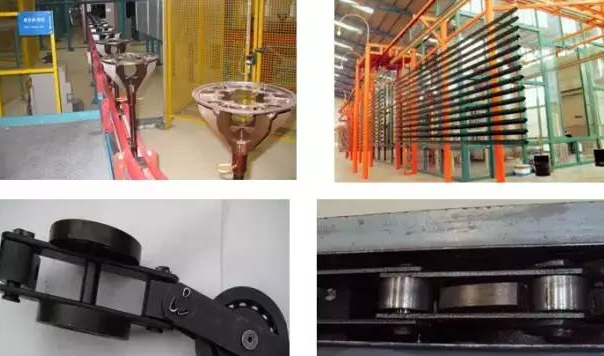
Privacy statement: Your privacy is very important to Us. Our company promises not to disclose your personal information to any external company with out your explicit permission.
The lubrication key point of the chain is between the hub and shaft, which is also the most prone area to wear and tear, which can cause the chain to elongate;

(5) Types of Conventional Chain Lubricants
In practical use, products will gradually expose a series of problems such as poor viscosity and temperature, inability to balance high and low temperatures, high volatility, and easy coking and carbon deposition. Synthetic oil is a lubricating product artificially synthesized by people based on these shortcomings of mineral oil, with strong comprehensive performance and much higher performance than mineral oil products. The working cycle is extended 5-8 times compared to mineral oil.
The most commonly used synthetic oils include PAO, polyester, and polyether (PAG). They each have their own characteristics. PAG type high-temperature oils have the characteristic of instantaneous evaporation, that is, they will quickly evaporate completely at a certain temperature (usually between 200 and 240 ℃), and their evaporation rate begins to increase rapidly at 160 ℃. Therefore, the amount of these oils used in actual use is often astonishing, but the evaporation characteristics of these oils can decrease and lower chain carbon deposition at temperatures above 160 ℃. The lubricating ability of synthetic hydrocarbon oil is lower than that of PAG, and the problem of carbon deposition in hydrocarbon oil is also relatively serious, so there are not many cases of using hydrocarbon oil to lubricate chains under conditions above 160 ℃. In the application of mineral oil, the problems of lubrication and carbon deposition can be quite serious, so mineral oil lubrication should not be applied here. Ester oils can reach a usage temperature of around 200 ℃, and have good viscosity temperature characteristics, are not easy to accumulate carbon and coke, making them the most widely used in automotive coating and conveying systems.
In addition, the high-temperature chain oil of the coating line should avoid containing free silicon components. Before selecting a product, a shrinkage test should be strictly conducted to avoid causing shrinkage on the workpiece.
November 08, 2024
April 26, 2024
April 26, 2024
Discussion on the problem of difficult cleaning of drawing oil for cold rolled sheet In the process of cold-rolled sheet processing, stamping and drawing is an important link, and the use of drawing...
Problems and solutions of burr, corrosion, difficult cleaning, volatilization insecurity in the use of stainless steel stamping and drawing oil In the process of stamping and drawing of stainless...
What are the hazards of too high oil ash? The harm of excessively high oil ash and the importance of low ash oil In the modern automobile industry, with the increasingly strict environmental...
How to distinguish lubricating oil impurities from sediment? And different handling strategies In the daily management of lubricating oil, it is important to distinguish and effectively deal with...
Email to this supplier
November 08, 2024
April 26, 2024
April 26, 2024
Send Inquiry

Mr. James
Tel:0086-371-58651986
Fax:
Mobile Phone:+86 13783582233
Email:sales@cn-lubricantadditive.com
Address:No.11 Changchun Road, High-Tech Zone, Zhengzhou, Henan
Related Products List
Mobile Site


Privacy statement: Your privacy is very important to Us. Our company promises not to disclose your personal information to any external company with out your explicit permission.

Fill in more information so that we can get in touch with you faster
Privacy statement: Your privacy is very important to Us. Our company promises not to disclose your personal information to any external company with out your explicit permission.